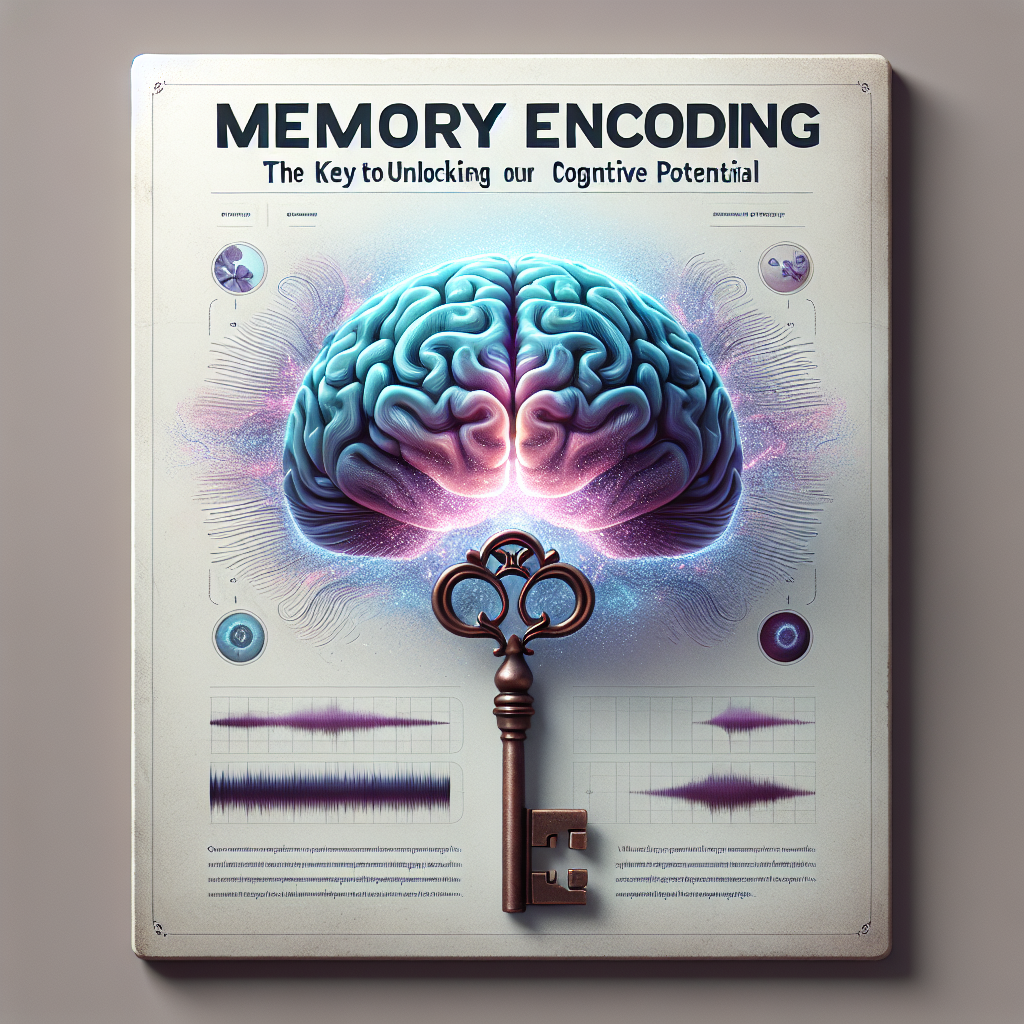Introduction
Imagine walking into a crowded room, the air thick with laughter and conversation, yet somehow you can single out one voice, one familiar laugh. This extraordinary ability to filter the chaos around you is a testament to your brain’s formidable memory encoding processes. Memory encoding shapes our experiences, learns from them, and fuels our personal and professional interactions. In this article, we will explore why Memory Encoding: The Key to Unlocking Our Cognitive Potential deserves your attention. It’s not just about remembering trivia or to-do lists—it’s about enhancing learning, improving emotional connections, and optimizing brain health.
The Fundamentals of Memory Encoding
Before we dive into the real-world applications and profound implications of memory encoding, let’s break down what it actually means.
What Is Memory Encoding?
Memory encoding is the initial step in the memory process whereby perceived information is transformed into a format that can be stored in the brain. This process involves three main types of encoding: semantic, acoustic, and visual.
-
Semantic Encoding: This involves relating new information to what you already know. For instance, when learning a new language, connecting a new word to its meaning enriches the memory.
-
Acoustic Encoding: This refers to the use of sound to help internalize information. It’s why we can remember catchy jingles or song lyrics easily.
- Visual Encoding: This type focuses on processing visual input; associating images with words can significantly boost recall.
How Memory Encoding Works
Memory encoding involves various mental processes, such as attention, perception, and understanding. This multifaceted approach means that the more senses we engage, the more effectively we can encode memories.
Table 1: Types of Memory Encoding
| Type | Description | Example |
|---|---|---|
| Semantic | Relating new info to existing knowledge | Learning new vocabulary |
| Acoustic | Utilizing sound for recall | Remembering a song’s lyrics |
| Visual | Focusing on images for retention | Using diagrams in study notes |
Memory Encoding in Daily Life
Case Study 1: The Mnemonics Marvel
Overview
A study conducted at a leading university explored the use of mnemonics in academic settings. The research observed two groups of students: one used mnemonic devices, while the other relied on rote memorization.
Results
Students who employed mnemonic strategies exhibited a 30% higher retention rate. This case illustrates that effective memory encoding techniques enhance learning capabilities significantly.
Analysis
The experiment highlights the importance of memory encoding in education. By integrating mnemonic techniques, we can enhance semantic encoding, thereby unlocking potential that many students do not even realize exists.
The Role of Emotion in Memory Encoding
Emotional experiences are often easier to remember than neutral ones. This phenomenon is largely attributed to the brain’s capacity to link emotions with memories.
Emotional Memory Study
A landmark study demonstrated that subjects recalled emotionally charged images significantly better than neutral images. Researchers found that the amygdala, the emotional center of the brain, plays a critical role in memory encoding.
Relevance
Emotions act as a "glue" that secures memories in the brain, enhancing both retention and retrieval. Understanding this connection can exponentially expand our cognitive potential.
Enhancing Memory Encoding Techniques
To harness the full potential of Memory Encoding: The Key to Unlocking Our Cognitive Potential, there are several strategy techniques that you can adopt.
Visualization Techniques
Example
Creating mental images can transform abstract concepts into relatable visuals. Consider visualizing a complex mathematical problem as a three-dimensional puzzle.
Implementation
Use mind maps, charts, or even drawings to reinforce your understanding of a subject. This engages the visual encoding process, enhancing memory retention.
Importance of Sleep
Recent studies have confirmed that sleep plays a pivotal role in memory consolidation.
Table 2: Sleep and Memory Encoding
| Sleep Stage | Impact on Memory |
|---|---|
| REM Sleep | Enhances emotional memory encoding |
| Deep Sleep | Essential for declarative memory consolidation |
| Light Sleep | Facilitates problem-solving and creativity |
The Future of Memory Encoding Research
As technology evolves, new methods for enhancing memory encoding are emerging, including neurofeedback, which allows individuals to learn how to regulate brain activity.
Case Study 2: Neurofeedback in Action
A recent experiment involving participants using neurofeedback to boost working memory showed promising results. Subjects who went through neurofeedback training showed remarkable improvements in memory encoding and retention.
Importance
By focusing on areas identified in the brain that correspond to memory tasks, memory encoding strategies can be personalized, thus unlocking unique cognitive potentials.
Conclusion
In summary, Memory Encoding: The Key to Unlocking Our Cognitive Potential is a multifaceted process that involves various techniques, emotional connections, and even sleep patterns. The insights gained from this exploration can foster not just academic success but also enrich everyday experiences, enhance emotional intelligence, and contribute to overall brain health.
So, the next time you find yourself struggling to remember a name or detail, consider applying these innovative memory encoding techniques. Begin unlocking your cognitive potential today!
FAQs
1. What can I do to improve my memory encoding?
- Prioritize strategies like visualization, mnemonic devices, and engaging multiple senses during learning experiences.
2. How does sleep affect memory encoding?
- Sleep facilitates memory consolidation, making it easier to retrieve information after a good night’s rest.
3. Can emotions influence how we encode memories?
- Yes, emotionally charged experiences are often remembered better due to the brain’s ability to associate emotions with memories.
4. Are there technologies that assist in memory encoding?
- Yes, neurofeedback is one such emerging technology that helps individuals learn how to optimize their brain activity related to memory.
5. How does age affect memory encoding?
- While aging does impact memory encoding, various cognitive exercises, new learning strategies, and a healthy lifestyle can mitigate those effects.
By embracing the principles and techniques of Memory Encoding: The Key to Unlocking Our Cognitive Potential, you can position yourself better for learning and life success. Begin your journey now, and unlock the cognitive capabilities waiting within!

